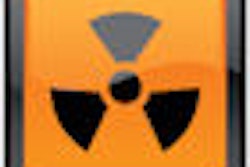Monday, November 30 | 11:10 a.m.-11:20 a.m. | SSC01-05 | Room S502AB
While prospective electrocardiogram (ECG)-triggering typically applies just a fraction of radiation exposure used in retrospective ECG gating, it also comes with two historical disadvantages -- solutions for which will be discussed in this scientific session presentation.Prospective ECG triggering is unable to obtain functional information, and, more importantly, patients with cardiac arrhythmia traditionally have not been candidates for the prospective procedure because the timing of the desired acquisition phase was impossible to predict. As a result, patients with arrhythmia had to be imaged with techniques using higher radiation doses.
Recent technical developments have successfully addressed these limitations so that patients with arrhythmia can benefit from low-dose cardiac CT exams.
Adaptive ECG monitoring, evaluated prospectively by Dr. Elisabeth Arnoldi, Dr. Joseph Schoepf, and colleagues from the Medical University of South Carolina in Charleston, analyzes a patient's ECG during image acquisition, pauses the scan sequence whenever arrhythmic heartbeats occur, and resumes scanning when normal rhythms return. This enables acquisition of volume datasets of the heart without ECG misregistration that would otherwise result in stairstep artifacts.
In all, 12 patients with cardiac arrhythmias (excluding atrial fibrillation), underwent invasive catheter angiography and prospectively ECG-triggered coronary CT angiography (CTA) on a 128-slice Somatom Definition CT scanner (Siemens Healthcare, Malvern, PA). Beta-blockers were administered to slow heart rates > 70 beats per minute. Two readers analyzed all coronary CTA studies in consensus using the 15-segment American Heart Association model, and compared findings to catheter-based angiography in all patients.
With a mean heart rate of 61 bpm ± 14, scans were acquired in about seven heartbeats using four or five prospectively ECG-triggered image acquisitions to cover the entire heart. Mean effective radiation dose was 2.6 ± 1 mSv. Excluding no data, coronary CTA delivered 97% sensitivity and 93% specificity per segment.
"Since August we have been working with second-generation dual-source CT, with which these algorithms have been further refined," Schoepf told AuntMinnie.com. "This scanner generation now also enables image acquisition in a hybrid fashion that combines the strengths of both prospective ECG-triggering and retrospective ECG-gating. It is now possible to obtain low-radiation-dose image datasets with prospective ECG triggering that also enable the assessment of cardiac function, so that the last limitation of prospective ECG triggering has also been overcome."



















